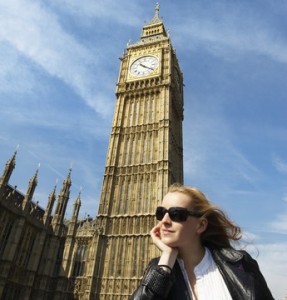
“Fall back, spring ahead”…most of us know this is a reminder to set the clocks back or forward due to Daylight Saving Time. Though it came about as a way to make better use of daylight, it’s caused quite a bit of clock confusion over the years. You can thank Benjamin Franklin for the idea. During his stay as an American delegate in France, he felt the French were wasting the day by sleeping til noon. Franklin humorously suggested starting the day earlier by firing a cannon. He thought the change would save millions of candles in the evening. It’s been an interesting evolution of the clocks chasing the sun ever since. From one man’s story of escaping the Vietnam War draft to the rescheduling of an Opera in Germany, Explorica takes you on a tour through the battle over time and the importance (or unimportance) of an hour.
Visit places mentioned in this blog:
France / Vietnam / Germany / London / Hawaii
Japan / India / China / Russia / Chile / Israel
The idea of longer days came from Ben Franklin but it took London builder, William Willett, to actually put it in practice. He was the first to seriously lobby for Daylight Saving Time in 1907 after noticing blinds were drawn in London homes in early morning hours. He suggested advancing clocks 20 minutes on each of four Sundays in April and setting them back by the same amount on four Sundays in September. Willett tried several times to pass Daylight Savings into law but it was met with opposition—especially from farmers who didn’t want to disrupt their schedules already ruled by sunrise. It wasn’t until World War I that Daylight Savings Time was recognized on a larger scale. Germany was the first country to adopt it to save coal for the war. Then came Britain, most of its allies and many European neutrals. Russia and a few other countries waited until the next year. The U.S. picked up the idea in 1918 to conserve energy during WWI (for the states choosing to participate) and then made it mandatory nationwide during WWII. After WWII, Daylight Savings Time was optional in the U.S. until 1973 when it was extended from six to eight months due to the Oil Embargo. This change saved the energy equivalent of 10,000 oil barrels each day, or 600,000 barrels in each of those two years.
In some instances through history, DST was a help and in others? Not so much. In 1916, the first night Germany “sprung forward” at 11 p.m. all German clocks were to be set to midnight. The Berlin Opera started the show an hour earlier so the crowds could catch their trains—a nice gesture for attendees. But flash forward to the 1950’s and ‘60’s and train travel sometimes meant crossing several time zones—a headache for passengers. For example, on one bus route from Ohio to West Virginia, riders had to change their watches seven times in 35 miles due to non-uniform DST. As frustrating as the time change did get, DST could have also been considered a lifesaver—especially for one young man about to be recruited for war. One lucky man was saved from the Vietnam draft after finding a loophole. He argued his birthday was recorded as 12 a.m. Standard Time and was actually born on the day before, which happened to have a higher draft lottery number. That guy did his research!
Some do, some don’t, some never will… States and countries could opt out of the plan, and many did, including Arizona and Hawaii. Japan, India, and China do not observe any form of DST. In Russia they live in permanent Daylight Saving Time (staying one hour ahead year round). This allows quite a bit more daylight because of Russia’s high altitude. Other areas adjusted the time change around big events. In 1987, The Pope’s visit delayed turning back the clocks in Chile, and again during the presidential inauguration in 1990. Israel pushed the time change back to Standard Time to Sunday instead of Saturday to ring in the Jewish New Year without any interruption.
You can’t stop time, and it’s still changing. Today, Daylight Savings has been adjusted as recently as 2007 thanks to The Energy Policy Act that extended the observance from March to November in the U.S. But, for most of the countries in Western Europe, DST takes place in March through October. With all of the changes throughout history, it’s easy to forget the dates when DST takes effect (Sunday, November 6th in the U.S.) But now the next time your alarm goes off, you might remember that the battle over an hour saved (or stolen) all started out to save some candles.
